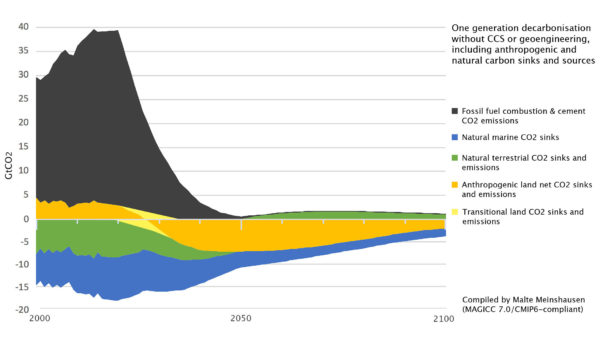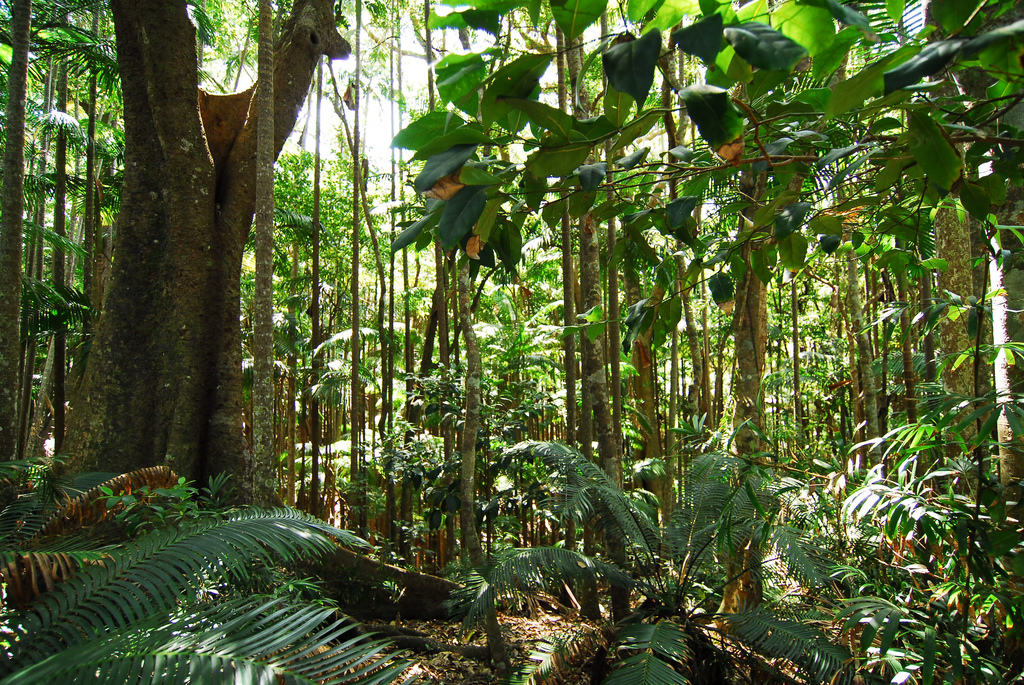A research team from the University of Technology Sydney, the German Aerospace Center and the University of Melbourne has developed a new climate model to solve the global climate crisis.
The researchers claim their construct is the “most detailed energy model to date”, as it provides data on 72 regional energy grids operating in hourly increments until 2050, along with a comprehensive assessment of renewable resources. The result, they claim, provides a roadmap for hitting the targets set by the 2016 Paris climate agreement.
The researchers also claim their model, unlike previous efforts which were not based on negative emission technologies, is the first to achieve the necessary negative emissions through natural climate solutions. The solutions required, according to the scientists, include a transition to a world energy system based on 100% renewable energy by 2050, and the restoration of degraded forests and other lands.

Image: Malte Meinshausen, One Earth Climate Model, 2019
“Citing a growing body of research, we show that using land restoration efforts to meet negative emissions requirements, along with a transition to 100 per cent renewable energy by 2050, gives the world a good chance of staying below the 1.5°C target,” said researcher Malte Meinshausen.
What’s eating Leo di Caprio?
The transition to renewables is expected to recycle natural gas infrastructure while creating millions of jobs, the scientists said. “This ambitious and necessary pathway shows that a transition to 100 per cent renewable energy, and strong measures to protect and restore our natural ecosystems, taken together, can deliver a more stable climate within a single generation,” said Hollywood star Leonardo di Caprio, who funded the research through his eponymous foundation.
In a recent interview with pv magazine, Christian Breyer – professor of solar economy at Finland’s Lappeenranta University of Technology – explained how a 100% renewables model is not only technically feasible but also the cheapest and safest option to fight climate change. With solar and storage at its core, the future energy system envisaged by Breyer and his team will not only stop coal, but also nuclear and fossil gas, while seeing solar reach a share of around 70% of power consumption by 2050.
This content is protected by copyright and may not be reused. If you want to cooperate with us and would like to reuse some of our content, please contact: editors@pv-magazine.com.




That now makes three independent teams of researchers saying the transition is doable: Mark Jacobson in California and the Solutions Project, the Finnish/German team hanging out with Father Christmas, and now these Australians.
Since the latter talk about “recycling natural gas infrastructure”, I assume their scenario includes a lot of P2G. Hydrogen, or synthetic ammonia, or synthetic methane?
Leo would do well to stay “in his own lane of traffic”, and forget about formulating ” social policy”. Be the best “fluff” he can be in films, and leave the heavy thinking to those people being paid to do it (excluding Trump of course).
Good on Leo for contributing, using his wealth for good and financing work that will benefit all of mankind.
Awesome! As a step in the right direction. Let’s not forget, though, that “renewables” are extractive. They are different, and not.